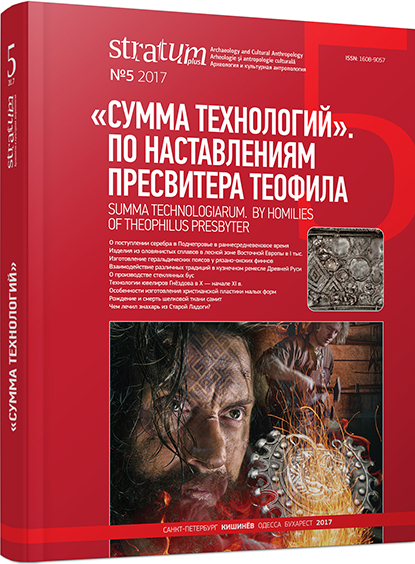О механизме распространения птицевидных фибул и подвесок у населения Центрального Кавказа в раннем средневековье
The Mechanism of Distribution of Bird-Shaped Fibulae and Pendants among the Population of the Central Caucasus in the Early Middle Ages
Author(s): Anna V. MastykovaSubject(s): History, Archaeology, Middle Ages
Published by: Издательский дом Stratum, Университет «Высшая антропологическая школа»
Keywords: Central Caucasus; Merovingian-Alamannian epoch; Gepid; Early Middle Ages; bird-shaped fibulae
Summary/Abstract: Small bird-shaped fibulae are a pan-European element of the early medieval culture, making part of female dress. In the middle of the 5th — middle 7th centuries they were widely spread in Western Europe, Middle Danube and on the Balkans. They are also found in the Caucasus where, unlike in other regions, bird-shaped pendants were also present. A quasi-simultaneous appearance of bird-shaped fibulae in different far-flung territories implies the existence of a common Roman/Mediterranean prototype reworked in the local traditions both in Eastern Europe and the Merovingian West. Emerging in the Caucasus in the post-Hunnic time as an allochtonic element of the prestigious international fashion, the bird-shaped fibulae got ‘acclimatized’ there and acquired specific traits charateristic of the Caucasus alone. While in Western Europe bird-shaped fibulae remained in fashion up to the mid-7th century, in the Caucasus they transformed into pendants and functioned until the 8th century as an autochtonous element of Alanian female attire.
Journal: Stratum plus. Археология и культурная антропология
- Issue Year: 2017
- Issue No: 5
- Page Range: 259-288
- Page Count: 30
- Language: Russian
- Content File-PDF

